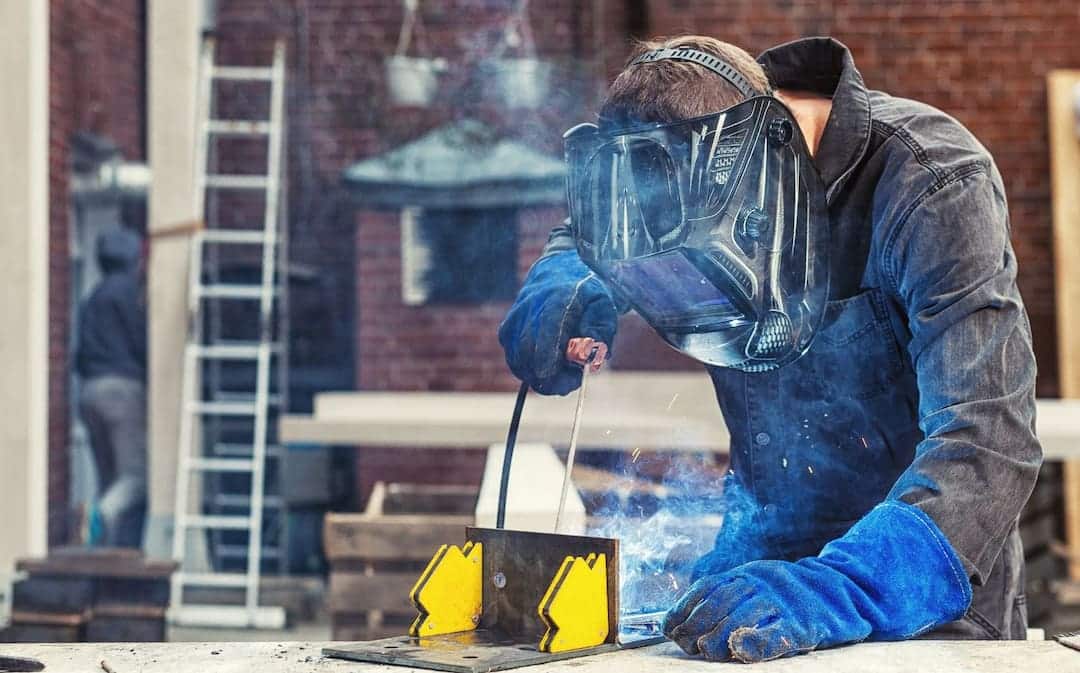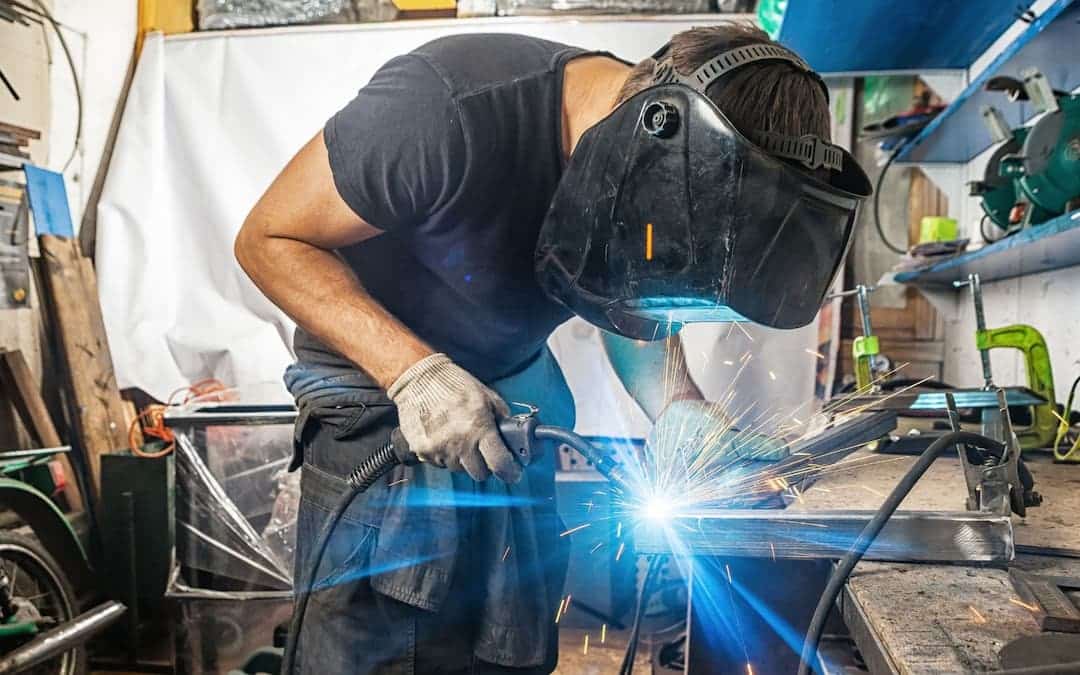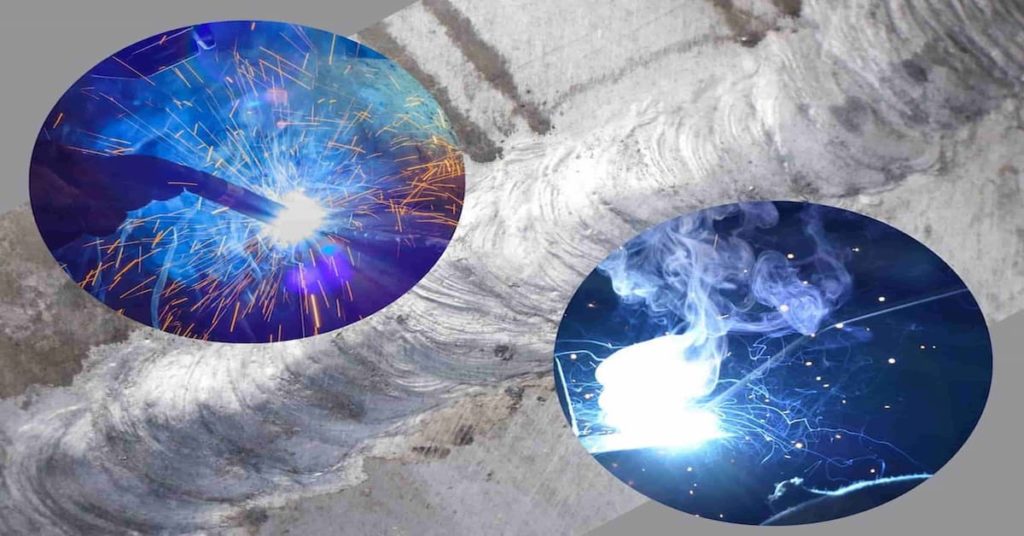If you're a welder, you know that multiple welding types are used to join metal pieces. Stick (SMAW - Shielded Metal Arc) and MIG (Metal Inert Gas) welding are the most common forms and have different benefits depending on what type of project you're completing – but is stick welding stronger than MIG welding? To answer this question, look at the stick and MIG welding processes and how their strengths compare.
Table of Contents
Key Takeaways
- Stick welding is versatile, cost-effective, and can be used to weld various metals, making it a valuable skill for anyone looking to work with metal.
- MIG welding is efficient and productive, but it also has some disadvantages, such as high equipment cost, the need for a high level of skill and experience, and hazardous spatter and fumes.
- In general, stick welding can produce stronger welds than MIG welding when used on thicker materials, while MIG welding can produce strong welds on thinner materials and is generally faster and easier to use than stick welding.
What is Stick Welding and How Does it Work?
Stick welding, also known as Shielded Metal Arc Welding (SMAW), is a popular welding technique that has been around since the beginning of the 20th century. It involves using a consumable electrode coated in a material that melts and forms a protective shield around the weld area. This creates a solid and durable bond between the metals being welded together. Stick welding is ideal for welding in remote locations, as it does not require external shielding gasses or power sources.
Instead, it uses a simple, portable welding machine that even the most basic users can operate. Stick welding is versatile, cost-effective, and can be used to weld various metals, making it a valuable skill for anyone looking to work with metal.

Advantages of Stick Welding
Shielded Metal Arc Welding (SMAW), or stick welding, is one of stick welders' oldest and most widely used welding processes. This method utilizes an electrode wire, a metal rod coated with flux that melts and creates a protective gas shield around the weld. Stick welders make this process advantageous due to the ease of use, portability, and affordability.
It can be used outdoors in various weather conditions, making it a popular choice for welding in construction sites and oil rigs. Stick welding produces a robust and reliable weld when welding thicker metals such as steel or cast iron. With its convenience, stick welding is still preferred among professional welders and hobbyists. The minimal cost associated with a stick welder and its electrodes makes it an attractive option for commercial and domestic welding projects.
Disadvantages of Stick Welding
Stick welding, also known as shielded metal arc welding, can be a helpful technique, but it has some drawbacks. One of the most significant disadvantages of stick welding is its low efficiency. It requires frequent stops and starts, making it time-consuming and challenging to maintain a consistent weld. Furthermore, it produces a lot of slags, which require constant cleanup and can reduce the quality of the finished result.
In addition to these drawbacks, stick welding typically involves a lot of skill and experience to master. Despite its limitations, stick welding remains a popular choice for many welders, particularly those working in remote locations or on heavy-duty projects.
What is MIG Welding and How Does it Work
MIG welding, or Metal Inert Gas welding, is widespread in the automotive and construction industries. MIG welding is also known as Gas Metal Arc Welding (GMAW). A wire electrode is continuously fed from a spool through a welding gun into the weld pool while working with a MIG welder. Simultaneously, an inert gas, such as argon or helium, is provided through the gun to shield the weld from the surrounding air, preventing the formation of rust and other defects.
The wire electrode quickly melts and fuses the metals, forming a durable bond. MIG welding is ideal for various materials, including carbon steel, stainless steel, aluminium, and copper alloys. The versatility and speed of MIG welding have made it a go-to welding method for many industries.

Advantages of MIG Welding
MIG welding is a popular welding procedure that offers many advantages over other welding techniques. One of the primary benefits of MIG welding is its versatility; it can join a wide range of metals and alloys, including aluminum, stainless steel, and carbon steel.
MIG welding is relatively easy to learn and can produce high-quality welds with a consistently clean appearance. Another advantage of this technique is that it allows for high welding speeds, making it ideal for large-scale manufacturing projects. MIG welding is also known for its low spatter levels, which can result in minimal cleanup and reduced post-welding work. Overall, MIG welding is a reliable, cost-effective, and efficient option for many welding applications.
Disadvantages of MIG Welding
MIG welders use shielding gas to create a powerful and precise weld. This type of welding is fast, accurate, and efficient, making it an ideal choice for industrial applications. However, the equipment cost of MIG welding, including the welder and shielding gas, can be high. It requires skill and experience that may make it unsuitable for DIY projects. MIG welding produces spatter and fumes that can be hazardous if proper ventilation is not provided.
In comparison to MIG vs stick welding, the advantages of MIG welding are clear, but its disadvantages should also be considered before selection. Using a MIG welder is beneficial when working on industrial projects. It is essential to weigh the costs and potential risks associated with its use.
So, is Stick Welding Stronger than MIG?
In general, stick welding (also known as SMAW) can produce stronger welds than MIG welding (also known as Gas Metal Arc Welding or GMAW) when used on thicker materials. Stick welding produces a deeper penetration weld, resulting in a stronger bond between the two metals being welded.
However, MIG welding can produce strong welds on thinner materials and is generally faster and easier to use than stick welding. MIG welding also allows for more control over the welding process and produces less spatter and slag than stick welding.
The strength of a weld depends on several factors, including the welding process used, the type of materials being welded, the skill of the welder, and the welding parameters used. It's important to choose the right welding process for the specific application and to ensure that the welding is done correctly and to industry standards to ensure a strong and reliable weld.

FAQs
What is the difference between stick welding and MIG welding?
The main difference between stick welding and MIG welding is that stick welding uses a consumable electrode coated in flux that melts and forms the weld. In contrast, MIG welding uses a continuously fed wire electrode and an inert gas to shield the weld from the air. Stick welding is generally considered a more versatile process that can be used in outdoor or windy conditions. In contrast, MIG welding is typically faster and easier for thinner materials.
Which type of welding is stronger?
The strength of a welded joint depends on many factors, including the welded materials, the welding technique, and the welder's skill. Stick and MIG welding can produce solid and high-quality welds when performed correctly.
Is stick welding stronger than MIG?
Stick welders are a popular and widely used welding process, making them a preferred choice for certain applications. A stick welder can weld various materials in flat, horizontal, vertical, and overhead, including steel, cast iron, and nonferrous metals. Stick welding is generally more economical than MIG welding, requiring less specialized equipment.
MIG and stick welders are typically combined to complete more complex projects efficiently. A MIG welder joins thin materials quickly and cleanly, while a stick welder is better suited to thicker materials that require more heat penetration. While MIG welding requires more specialized equipment than a stick welder, such as a gas cylinder or an additional power supply, the weld quality achieved with this process is often superior to a stick weld. Both processes require skill and knowledge to be completed correctly and safely.
Combining a stick welder and MIG welding equipment is ideal for completing complex fabrication and repair tasks. By utilizing both processes, fabricators can achieve excellent results while keeping costs.
Conclusion
There is no clear winner when it comes to welding. Both stick welding and MIG welding have advantages and disadvantages depending on the job's requirements. It is crucial to understand both types of welding and their differences before selecting which method will be most effective in a given situation. Stick welding requires more experience to master and offers more straightforward utility equipment cost savings, while MIG welding is less skill dependent but requires more specialized supplies. Ultimately, both methods are great options for joining two pieces of metal and can be adapted depending on the specific application.
